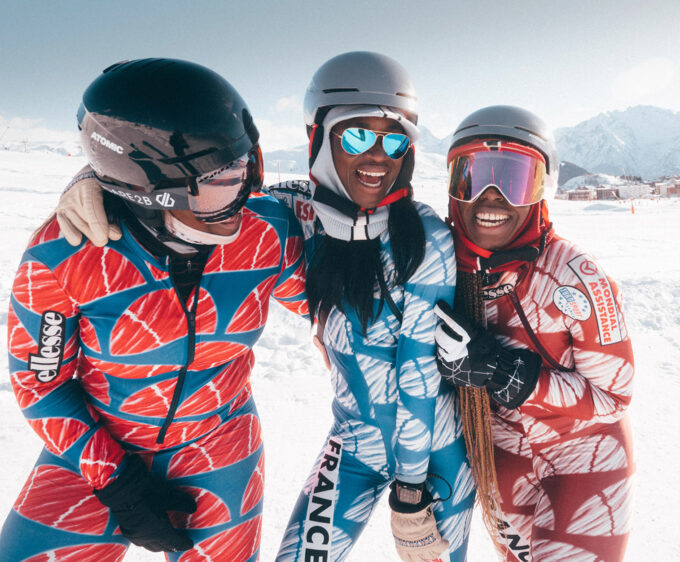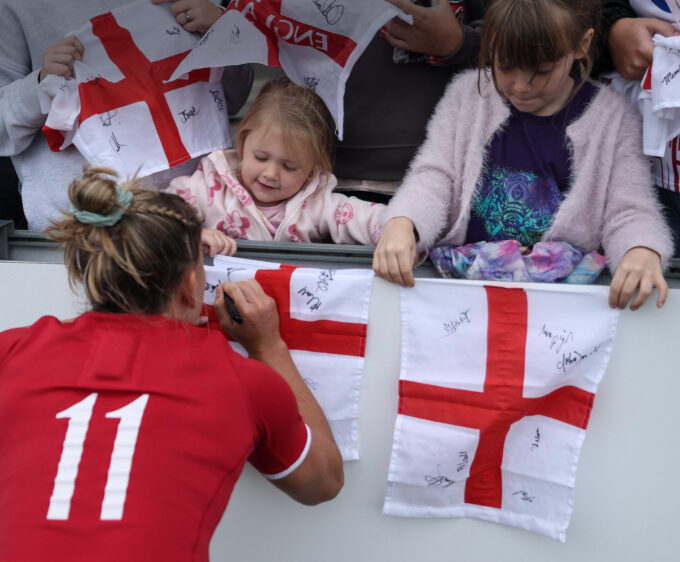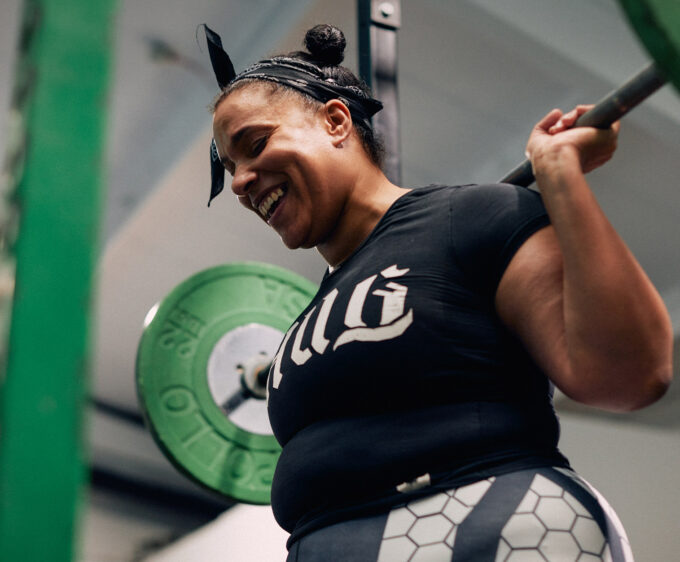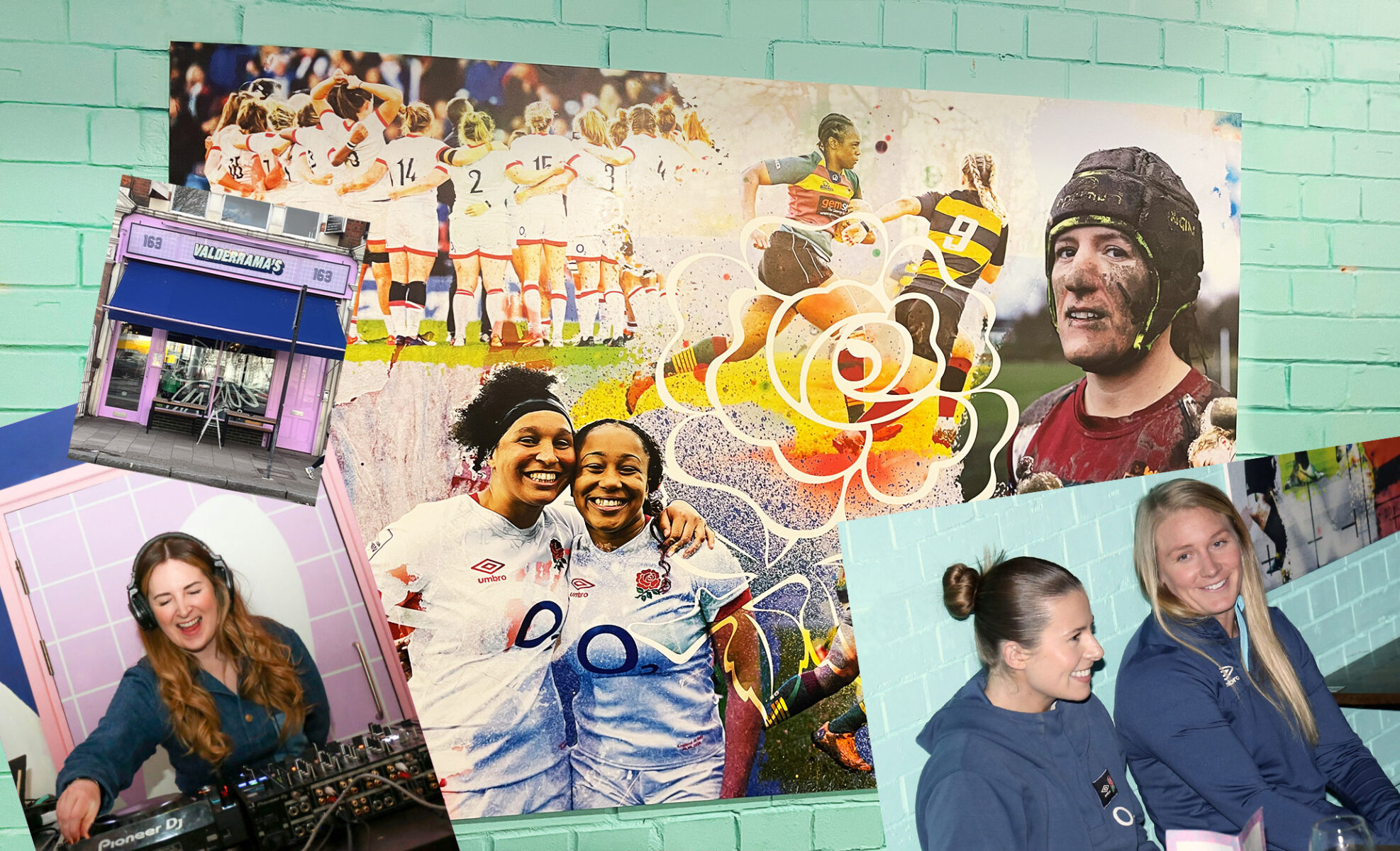
Red Roses: Ushering In A New Era Of Women’s Rugby
When was the last time you piled into a packed bar to find women's sport being shown on the TV? We detail the highs of our Red Roses watch party and the positive changes for the next generation of young female players and spectators
By Liz Connor
Photography by Lara Miller
I grew up in a rugby league-obsessed town in the North West of England, where small talk isn’t about the weather, but dissecting last weekend’s match result. Walk into any pub and you’re pretty much guaranteed to see a rugby game on the TV. And it’s not unusual to hear people boom rugby chants on the streets at any time of the day or night.
In the late 90s, I played in a fledgling girls rugby team at my primary school. Every Tuesday evening, me and my pals would huddle on the school playing field and shriek tactics at each other, loving the game’s blend of speed, skill, physicality and teamwork. But while the boys team had sponsors, leagues, fancy kits and championships, we always struggled to find other girls in the county that we could test our skills against.
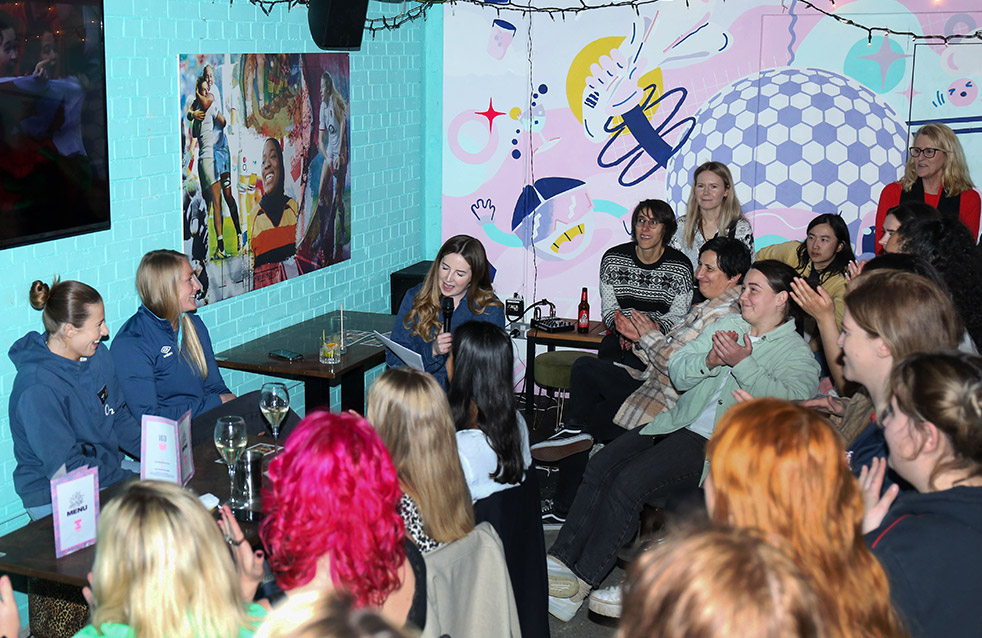
When I got to high school, the opportunities to play rugby dwindled even further. Jonny Wilkinson’s drop goal at the 2003 World Cup had brought the sport to a fever pitch, but our PE lessons were spent gossiping on a netball court. Feeling discouraged, my friends and I swapped sport for makeup, fashion and music, and never picked up a rugby ball again.
So I’d say it’s a pretty full-circle moment to be at Valderrama’s sports bar in Islington watching England’s Red Roses storm to victory in the first match of the Women’s Six Nations Championships. Before today’s watch party, I’d never seen women competitively play rugby before, let alone watched along with a hundred other people screaming and cheering at a big screen.
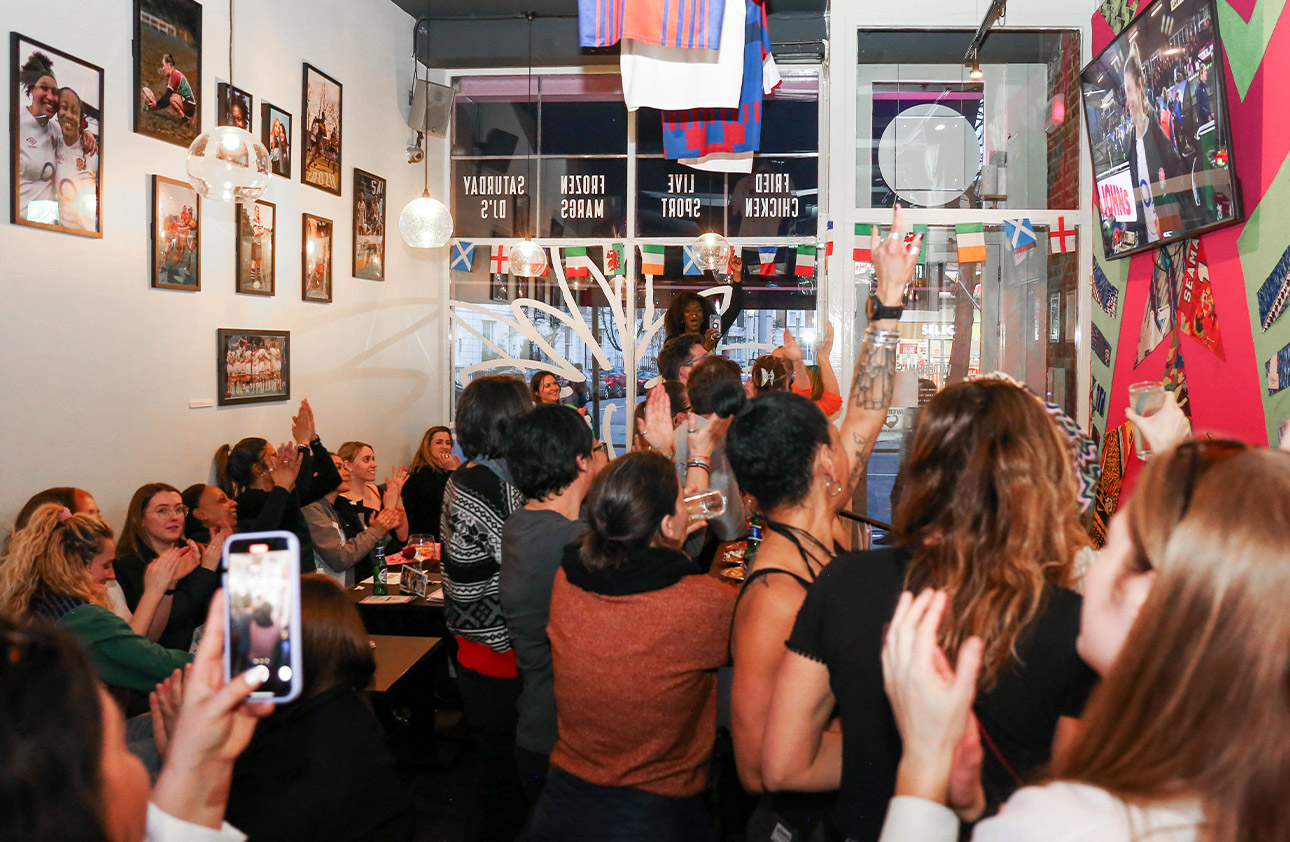
Recognition And Awareness Of Women’s Rugby Is Rising Fast
Spectatorship in women’s rugby is massively growing though. Today’s match against Scotland is being played at a sold-out Kingston Park stadium. According to World Rugby, the women’s game is one of the fastest-growing team sports in the world and TikTok’s four-year partnership with the Women ‘s Six Nations proves that brands are finally taking the visibility of women’s sport seriously. England Rugby sponsor O2 has pledged to deliver equal funding to both the men’s and women’s teams, while this year, the BBC are showing every game of the Women’s Six Nations Championship, in full, for the first time too, which is a massive step for gender equality in the sport.
“I didn’t really know anything about women’s rugby before today,” says Jackie Pull, a member of Hackney-based football team Ex-Girlfriend FC. “I think it comes down to the games being broadcast on TV or visible on screens in pubs like this, so people like me can stumble onto a match and start watching.”
Today’s watch party is just one example of that ‘build it and they will come’ mentality. It’s sold out, packed to the rafters and buzzing with match day energy. I chat to a few spectators including Wing Chong, a newcomer to women’s rugby. “No matter what sport you’re into, I think it’s just exciting to see women succeed. People are interested in the match result of course, but it feels like we’re cheering on women getting the platform they deserve.”
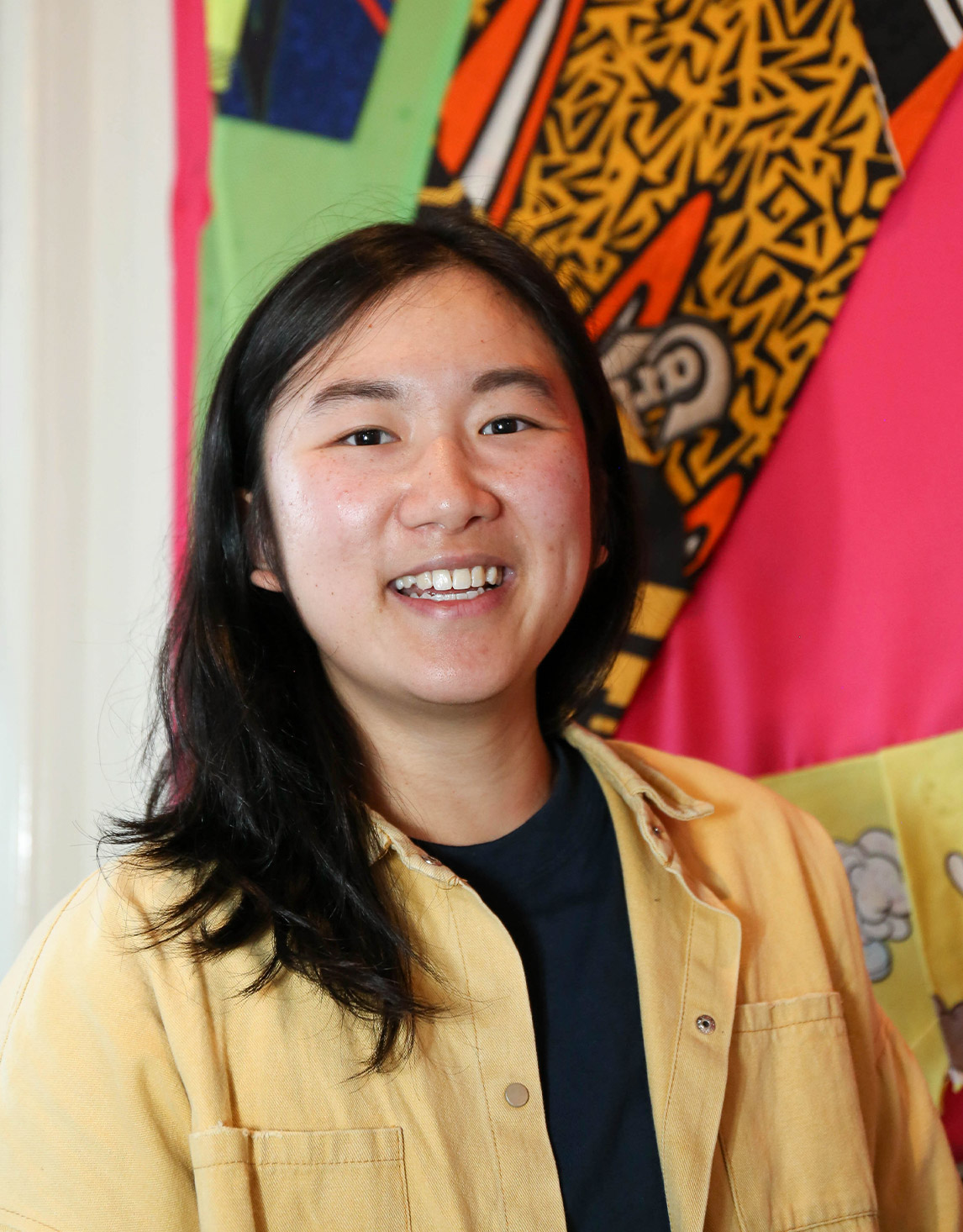
England’s Lionesses winning the Euros at Wembley last summer was a tipping point for women’s sport. A cool 17.4 million people tuned in to watch England’s win over Germany in the final, and plenty more were glued to screens in pubs and venues across the country. Women’s rugby is fast following suit in the numbers game. Last year’s Red Roses World Cup final drew an audience of 1.82 million and the Women’s Six Nations says there was a 135% increase in television ratings in 2022.
Creating A Safe Space
Despite these numbers, standalone places for women to watch sport safely are somewhat niche. During the women’s Euros, LGBTQ+ collective Baller FC helped Valderrama’s to create an inclusive space for fans to enjoy sport without prejudice. While the ultra-masculine environment of the pub on match day has always intimidated me, today’s party, jointly hosted by the RFU and Glorious, also feels inclusive, welcoming and friendly.
COMMUNITY

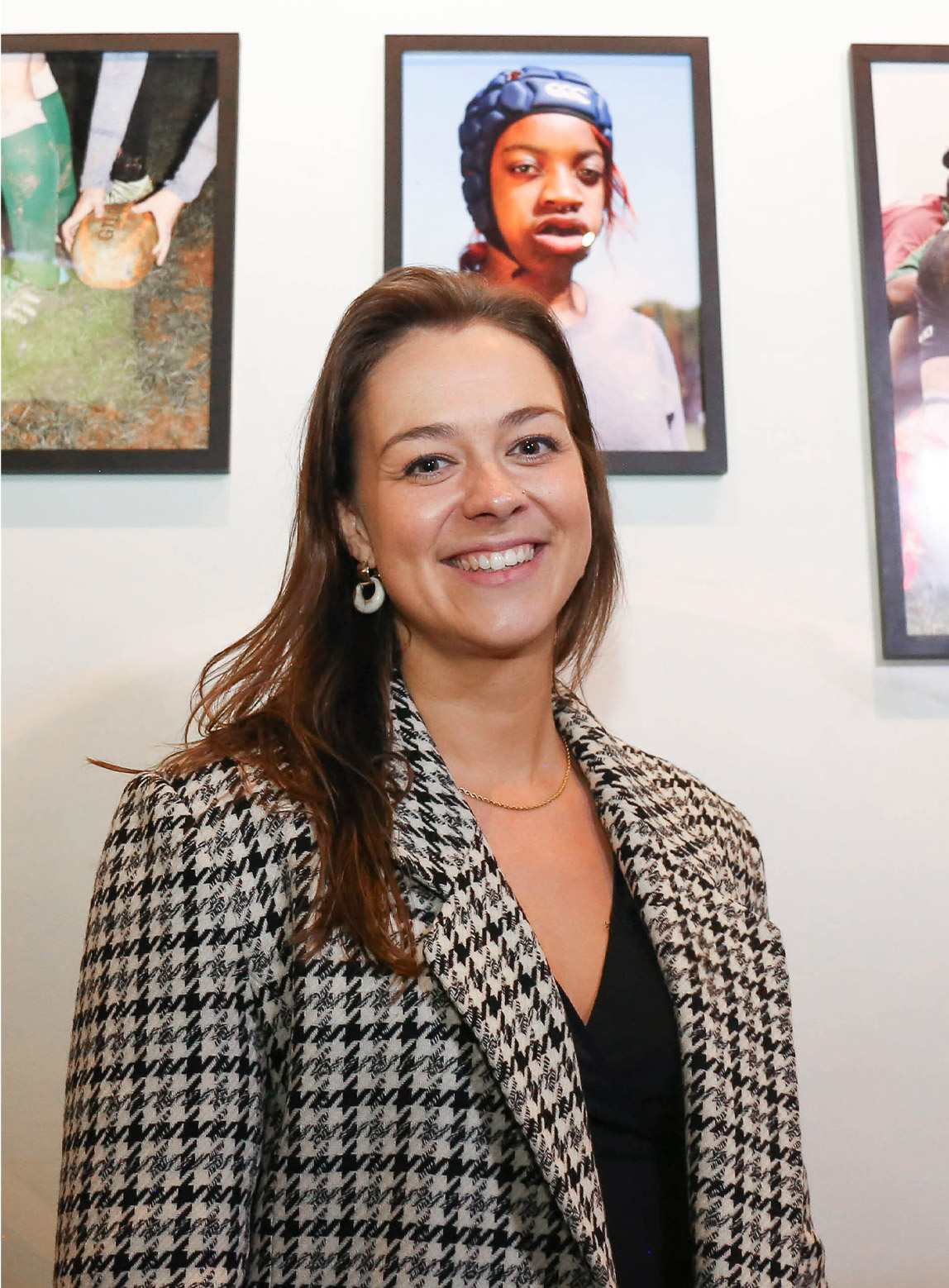
“We know that safe spaces in the community take away that barrier to watching sport for women and non-binary viewers,” says Clare Barnett, Director for UN Women. “Previously you’d go into a pub and not feel welcome, or maybe you’d worry about sexual harassment. If we can do more watch events and get the appetite up at a grassroots level, we can show leaders that there’s money to invest in women’s sport.”
Alongside the screening, today’s event sees a Q+A between BBC Sport and BBC Introducing presenter Abbie McCarthy and Roses legends Alex Matthews and Zoe Harrison. There’s also ticket giveaways for England’s final match of the Women’s Six Nations against France at Twickenham stadium, signed shirts, Clinique goodie bags (the beauty brand has been supporting girls’ clubs across the region as part of their #GameFace campaign) and a DJ party late into the night with McCarthy on the decks.
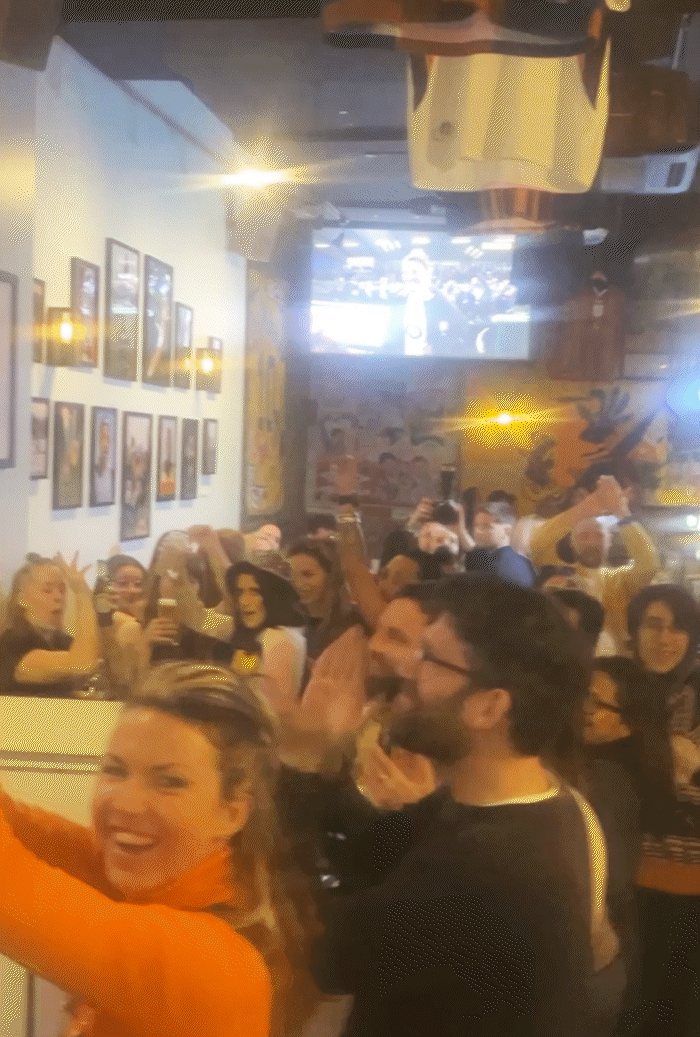
I’m relieved to hear that Harrison feels the barriers I faced with rugby at school are finally being addressed. “Lots of girls now go into rugby clubs and they’ll have five friends there from the same school, whereas when I was younger it was just me. I used to get called a ‘man’ for playing rugby, but the sheer amount of girls joining the sport is changing those stereotypes. The younger generation gets to see that sport is for everyone.”
Women’s Rugby Fandom
The players have noticed numbers growing in the stadiums too. A recent report from The Women’s Six Nations said there was a 70% increase in match attendance in 2022, with more women choosing to spend a day out at the rugby. “I vividly remember when it was just friends and family coming to our matches, and now we’ve got fans waiting an hour and a half in the rain just to get a photo,” says Matthews. “Seeing how much it matters to people is important to us players. It makes us want to stay out training on those days when it’s freezing cold.”

Right now, there’s a growing excitement around the Red Roses first standalone game at Twickenham on 29 April; the team’s final-round match of the Women’s Six Nations against France. This game has already reached a record number of tickets sold for an international women’s rugby fixture. It shows just how popular these matches are becoming.
Rugby union is the most popular version of the game worldwide, but Rugby 7s is a format that’s fast growing in popularity, particularly after its inclusion in the 2019 Rio Olympic Games. The main difference is the number of players on the field – in rugby 7s there are seven players on the field, compared to 15 in union. “Without events like this, women have to stream the game in one of our living rooms because there isn’t really a space where we can go to easily watch the match together,” says England 7s speedster Lauren Torley. “If we go to the pub, all eight screens might be showing the men’s football, and then if you ask for the bar staff to put the rugby on there’s always the chance they’ll say ‘no’. For too long we’ve had to find ways around accessing our sport.”
And there are lots of great reasons why women enjoy watching rugby too. “I like the physicality,” says sports broadcaster Stella Mills. “I like that women are praised for being brutal, fast, strong and big. All those words are often conveyed as negative, but put them in the rugby atmosphere and they become positives.”
“People often think there’s a difference between the men and women’s games, but it’s just as physical and just as fast,” agrees broadcaster McCarthy.
Diversity And Inclusion In The Women’s Game
Jumi Popoola is a 32-year-old photographer who briefly played rugby at school. Like me, she’s finding today’s match bittersweet. “We had to fight for girls to be able to play rugby.
We were told ‘you’ll get smashed in the face so maybe try gymnastics or netball instead’.”
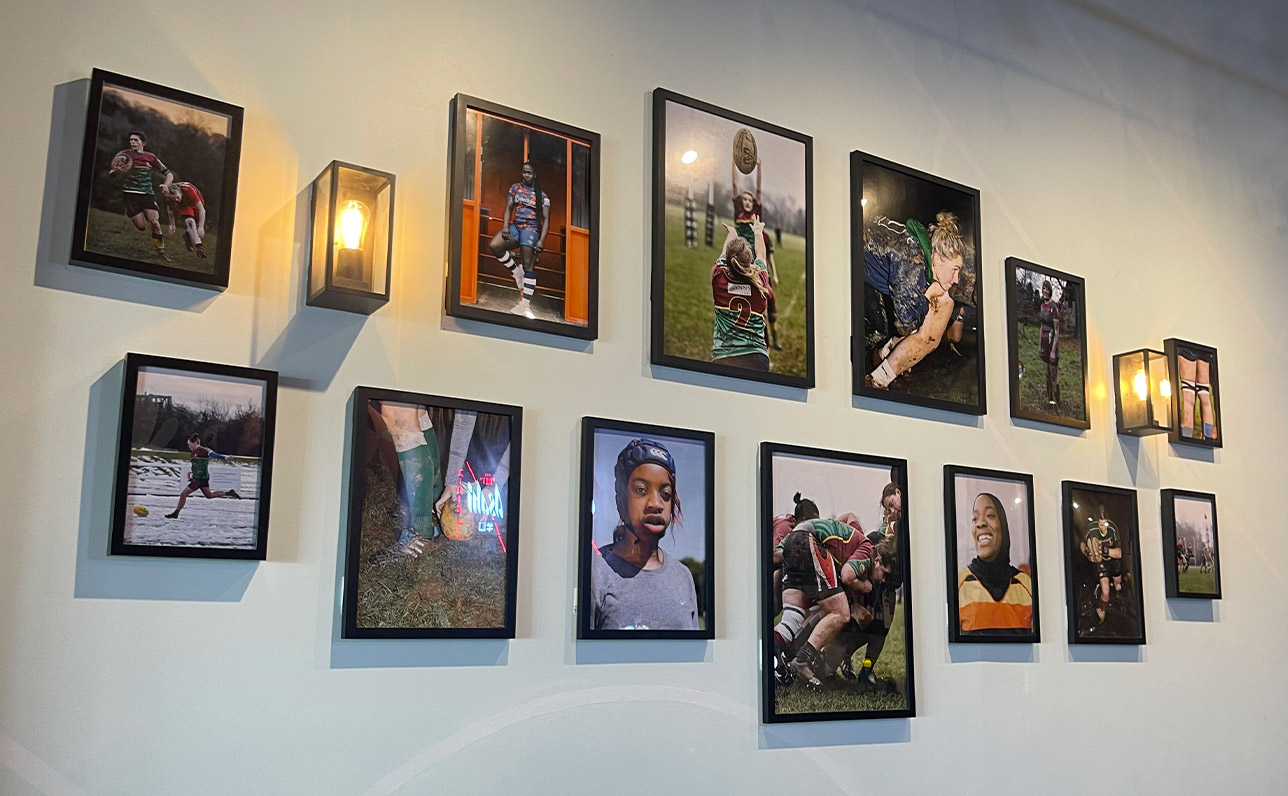
Popoola believes that role models are really important to boosting girls’ confidence in sport. “As a young Black woman growing up in Essex, I didn’t see anyone who looked like me in rugby or football. It made me feel like I didn’t have a place in the sport. It was frustrating and discouraging, so it’s amazing to see how much has changed. The Roses are the sporting role models that I needed when I was younger.”
Things are changing, but there’s still a way to go. Recent stats suggest that 68% of young girls are still prevented from taking part in sports because of a fear of being judged. “Research has found that gender equality attitudes are fixed by the age of four, so the TV at home has a huge impact on young people,” says Barnett of UN Women. “The amount of change we can create through sport in gender stereotyping is huge, but also in culture more broadly.”
What’s exciting about women’s rugby is that there’s no ‘typical’ viewer, in the same way that the sport celebrates diversity and there’s a position on the pitch for every body type. “Women’s rugby has a massive queer presence,” Ex-Girlfriend FC player Gemima Hull tells me. “You never really get to watch sport as a queer woman in a non-male dominated drinking space. It feels safer here.”
“Can you go anywhere else in London right now and guarantee that women’s sport will be on the screens?,” says No Woman No Try documentary director Victoria Rush. “We need to watch women’s sport together, as it normalises women’s sport owning these spaces. It’s only in the past year or so that we’ve started having these watch parties. People have wanted this for ages, just nobody has listened.”

As the full-time whistle blows, Valderrama’s erupts with screams and cheers at the Red Roses’ 58-7 victory over Scotland. People stop on the street to peer through the windows, curious to find out what they’re missing. “Earlier, two guys came into a bar packed full of women’s rugby fans, just wanting a pint,” Mills tells me. “By the time they left they became fully converted fans and couldn’t stop talking about how great the game is.”
There’s rapturous applause too for rugby legend Sarah Hunter, who wraps up her phenomenal career and retires to a standing ovation at the stadium. The back-row forward is leaving the game as the world’s most-capped women’s player, and England’s most-capped player, male or female.
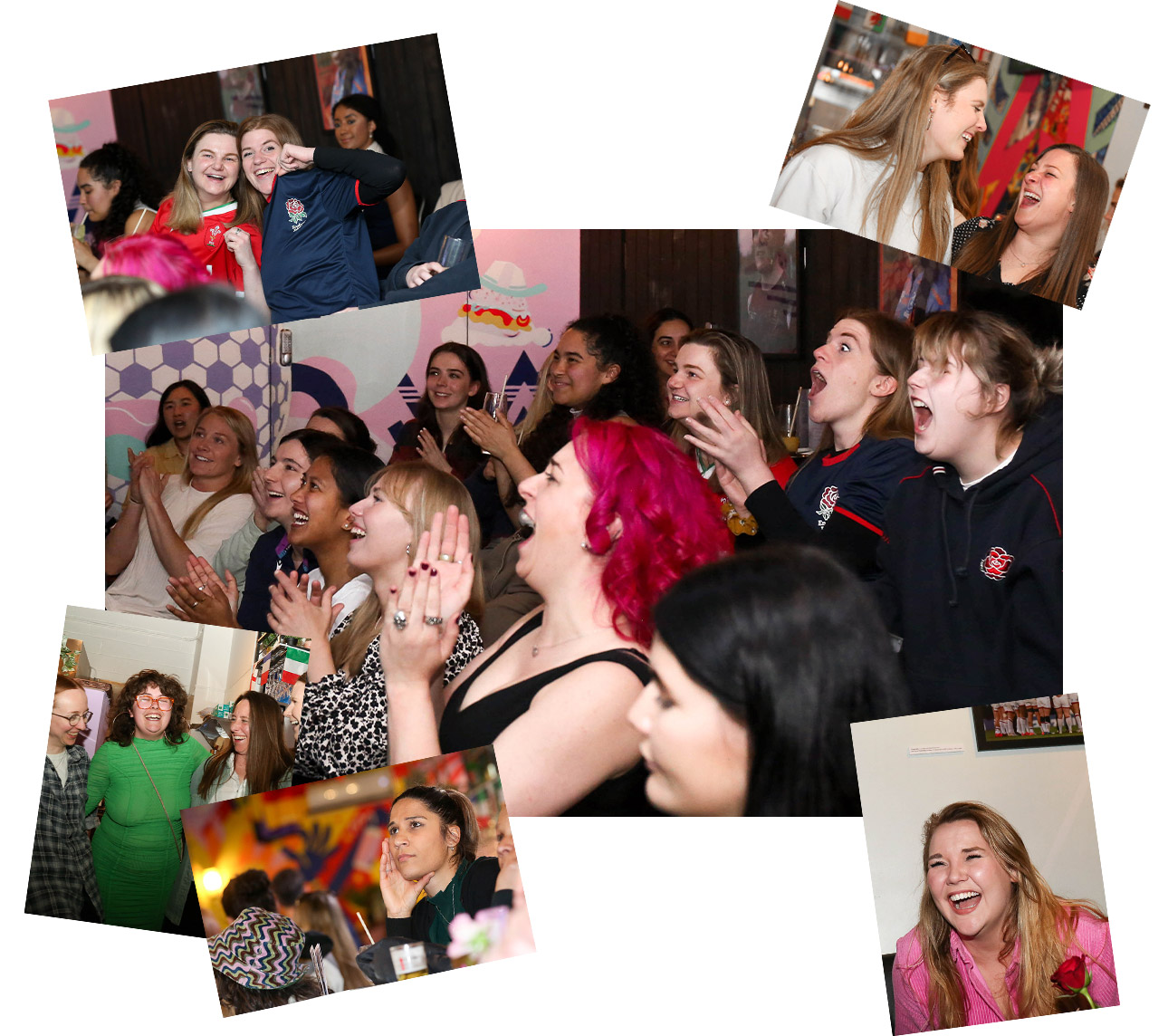
CELEBRATION
While women’s football may be getting all the buzz on social media, the rugby series has opened my eyes to just how exciting this sport can be. I’ve spent the entire 80-minute game celebrating try after try, including an incredible hat trick from new England captain Marlie Packer.
Whether you’re already a die-hard fan or you’re curious to find out why so many women are flocking to rugby, the Women’s Six Nations coverage is a great place to dip your toe in – and today’s euphoric victory on home soil has definitely won me over as a fan. Let’s hope these DIY watch parties continue to grow in line with the sport so it’s not just the women who play rugby that can thrive – but those who love to watch it too.
*Upcoming Women’s Six Nations fixtures can be watched on the BBC and tickets for the final round match at Twickenham, England v France, can be bought here.
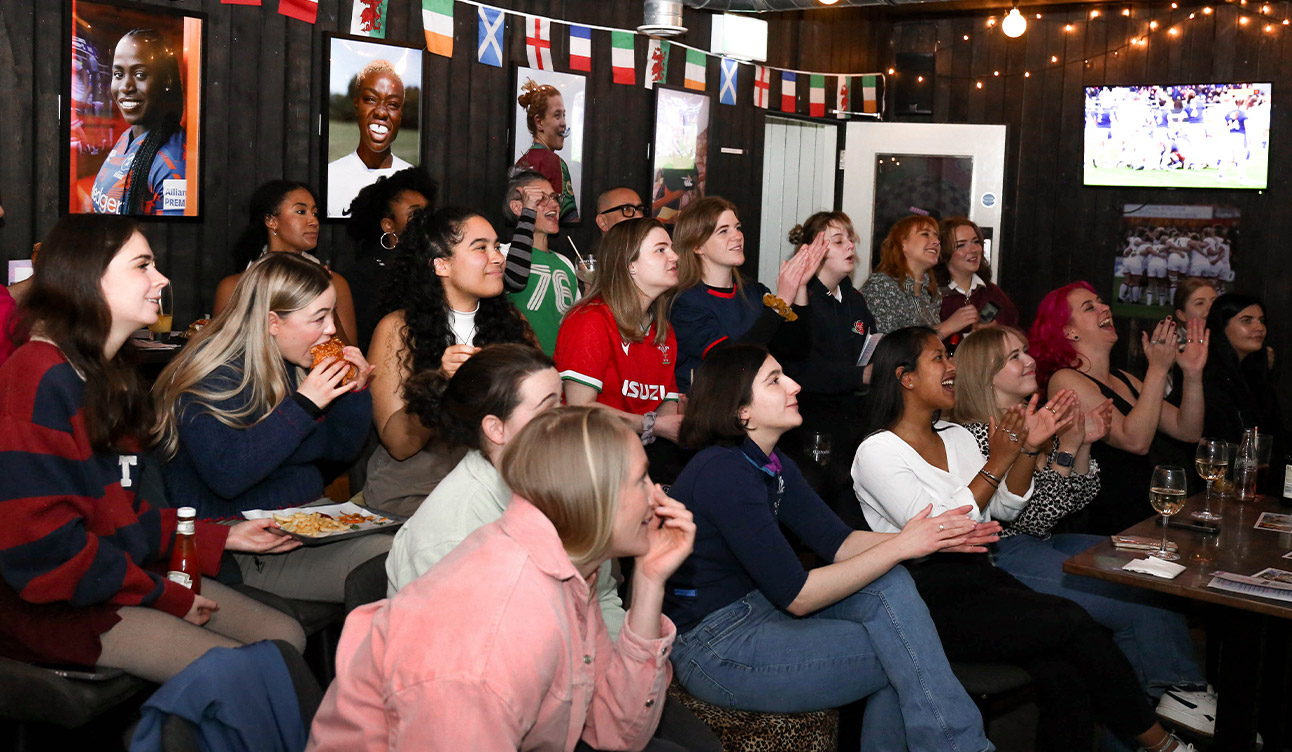
Editorial Design by this is root , Photography by Lara Miller
